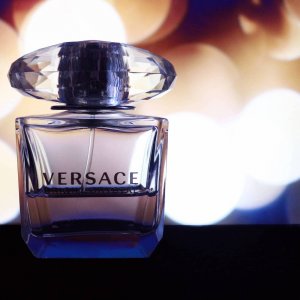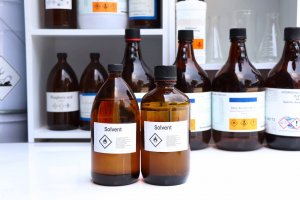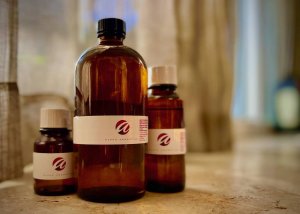Selecting the ideal solvent is pivotal for crafting exquisite fragrances. In this guide, we unravel the art of choosing the right solvent when creating captivating scents. Exploring the impact of various solvents on fragrance composition and stability, we offer our master perfumer’s insights into matching solvents with specific ingredients, unlocking the full olfactory potential of a fragrant masterpiece for your product or product line.
Fragrance creation is a fragile artistry that represents the better, pleasant and more soothing aspects of our lives and the powers of human imagination.
Scent formulations provide a subtle affirmation of life’s pleasantries every time we light a candle, dip a reed diffuser in oil, apply moisturizing cream or perform mundane household tasks such as cleaning and doing the laundry.
While fragrance choices may be nearly infinite, the types of solvents that can be effective for their dilution are not.
A perfume’s individual chemicals and properties such as: polarity; volatility; surface activity and stability are all balanced and determined by the choice of the proper solvent.

What Is A Solvent As It Pertains To Perfume Creation?
A solvent is defined as any substance, which is usually liquid, that has the capacity to dissolve, suspend or extract one or several compounds and create a solution without chemically altering either the solvent or the solute (substance that is dissolved).
In the world of perfumery, raw materials such as essential oils, require solvents because they do not dissolve in water.
For many years, the true potency of solvents lay untapped until modern pressures for eco-consciousness pushed their utility as vital ingredients in maximizing the true performance of perfumes formulated by master perfumers.
How Exactly Do They Work In the Dilution Process?
The solvent is multi-functional within the dilution process.
Its primary purpose is both powerful and delicate, as it must extract, dissolve or suspend raw materials and leave both itself and the dissolved substances chemically intact. In this state, reactants are fluid.
Without use of the solvent, they can become either solids or if liquids, be too thick for mobility and become more like oils.

What Are The Different Types of Solvents Used In Perfumery?
There are two categories of solvents; namely polar and non-polar. Polarity is defined as the ability of a specific solvent to dissolve another substance.
The former have charge separation (positively charged) and the latter are negatively charged.
Polar solvents easily dissolve other polar substances because of the attraction between opposite charges.
Due to the fact that non-polar solvents contain bonds between atoms with similar electronegativity, such as carbon and hydrogen, this affinity between charges cannot occur.
Roger Howell, Alpha Aromatics VP Chief Perfumer

What Are The Specific Solvent Used In Perfumery?
The following represent a list of some popular polar and non polar solvents used by our perfume developers at Alpha Aromatics.
The Key Polar Solvents Used In Fragrance Creation
Acetone
In perfumery, acetone is primarily used for both the extraction of essential oils and for its sweetish aroma.
Often found in feminine scents, acetone is known to dissolve quickly on the skin. This odorless, volatile and flammable solvent occurs naturally in plants, trees and forest fires.
Alcohol
Perfumer’s Alcohol has been used for many decades and is considered to be the universal carrier solvent for fine fragrance concentrates (oils).
This is due to the fact that it is highly compatible with most substances.
This is not drinking alcohol, but rather a denatured variety, known as ethanol or ethyl alcohol, which permits a final scent to be applied smoothly via an atomizer or spritzer.
It is light, volatile and swift in the distribution of delicate fragrance notes. It is often found in cheaper diluted fragrances such as:eau de cologne and eau de toilette.
Due to the fact that alcohol has less polarity than water, it evaporates more rapidly and reaches a boiling point at a lower temperature.
This makes it very useful in blending essential oils into water so that the end result is a substance with a unified structure that can never again be separated.
Isopropyl Myristate (IPM)
This odorless solvent is a moisturizer used primarily in fragrances that are designated for oil or wax products such as: candles; wax melts; massage oils and lipsticks.
It serves as a substitute for ethanol in non-alcoholic perfumes that are specifically formulated for skin care products.
Most commonly found in creams, lotions and topical medications, this thickening agent is well noted for its ability to promote the absorption of medications via the skin and serves as an effective binder in many perfume creations.
Water
Water is the most important thing to every living creature on earth. It is known as the “universal solvent” in perfumery because it can dissolve just about any solute known to man.
This is due to its molecular structure, which contains a high polar arrangement of oxygen and hydrogen atoms, the former having a positive electrical charge and the latter a negative one.
This factor permits water molecules to become attracted to other diverse atoms and disrupt the affinity between them, thus causing dissolution.
Water soluble fragrances are synthetic scents, and they are formulated specifically so that they are easily incorporated into water-based products such as: linen sprays, body splashes and facial and hair mists.
The perfume oils in these particular scents are mixed with distilled water, which renders a natural, soft and smooth character.
The Key Non Polar Solvents Used In Fragrance Creation
Carbon Dioxide
Also known as CO2, this natural method of extracting fragrance from plants is accurate, eco-friendly and FDA-approved. Unlike other operations that require heat, CO2 extraction only occurs under high pressure.
The lack of oxygen benefits the method of extraction because there is never any loss of electrons.
Plants and other materials are placed in a basket inside an extractor chamber where CO2 is introduced in liquid form and bathes the raw materials.
The high pressure and low temperature coaxes the plant oils to release their fragrances.
Ethyl Acetate
This clear, liquid solvent, which is also known as ethyl ethanoate, is known for its light, sweet and fruity aroma.
It is a popular choice within the cosmetics industry because of its low cost and high degree of compatibility with other organic solvents.
It breaks down easily in both air and water simultaneously and is often found in nail polish, mascara and other cosmetic products.
It evaporates rapidly and is an effective gelling agent in perfumery because it allows the fragrance to linger on the skin without any oily or alcoholic residue.
Ethyl Alcohol
Also known as organic sugar cane alcohol, this solvent is very popular in perfumery because of it compatibility with many other substances.
Most often derived from corn, grapes or sugar cane, it often requires multiple distillations to remove all impurities.
With the exception of boutique brands that often make roll-on scented oil or solid perfume, perfumer’s alcohol (ethanol) is by far the most often used solvent for even resinous oils, and it is found in the great majority of commercial perfumes.
In Conclusion
Situated in Pittsburgh, Pennsylvania, we rely heavily on a variety of solvents to create our unique and cutting edge formulations that are used in a myriad of applications ranging from fine perfumes, private label brands, personal care, candles and diffusers to household cleaning products, industrial and institutional air fresheners and so much more.
Call our teams today and find out how we can help develop a special scent for your commercial enterprise.
Whether pales, drums or totes, we’ve got your fragrance supply needs covered!
 alpha aromatics®
alpha aromatics®
